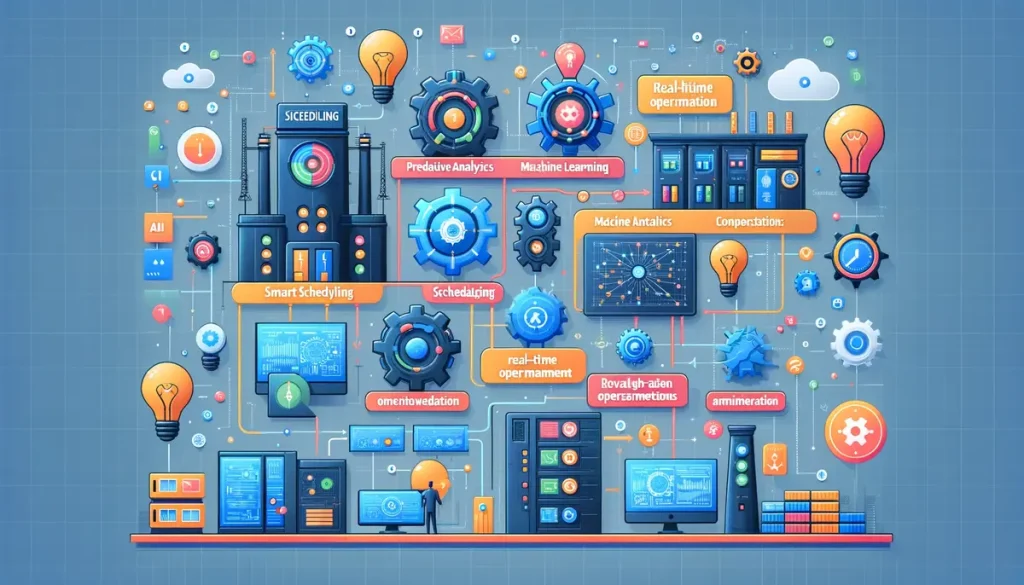In utility sector, efficient management of resources is more crucial than ever. With the integration of artificial intelligence, AI-driven smart scheduling is emerging as a transformative solution for utilities grappling with the demands of reliability, cost efficiency, and safety. This technology not only streamlines operations but also enhances productivity and minimizes service disruptions, making it a pivotal tool for utility companies aiming to optimize their workflows in the face of labor shortages and regulatory challenges.
Read More: How a Virtual Scheduling Assistant Can Save You Time and Money in 2024
The Challenges Faced by Utility Companies
Utility companies today find themselves under immense pressure from various fronts. The balance between maintaining reliability, managing costs, and ensuring safety has never been more challenging, especially with the added complexities of post-COVID-19 hybrid work environments and increased regulatory scrutiny. Traditional methods often lead to inefficiencies and a perception that compromises must be made among essential priorities. Smart scheduling offers a pathway to address these challenges holistically, without the trade-offs that have historically hampered progress in the industry.
The implementation of AI-driven scheduling solutions is not just about technological advancement; it addresses fundamental operational challenges, such as unpredictable labor availability and the inefficiencies of manual scheduling processes. By automating and optimizing scheduling, utilities can significantly reduce downtime and improve response times to service disruptions, directly impacting their bottom line and customer satisfaction levels.
Moreover, labor shortages continue to strain the utility sector, necessitating a shift towards more strategic and efficient work management practices. Smart scheduling tools are pivotal in this context, enabling companies to do more with less by maximizing the productivity of available workforce and resources. This strategic allocation is critical in an industry where every minute of downtime can lead to significant operational and financial consequences.
The Benefits of Smart Scheduling
Smart scheduling systems harness the power of AI to offer numerous benefits that extend beyond simple efficiency gains. These systems enhance the overall functionality of utility operations by:
- Reducing Employee Downtime: By intelligently matching tasks with available resources, smart scheduling minimizes idle times and ensures that every worker’s time is utilized effectively.
- Boosting Productivity: Implementations of smart scheduling have shown productivity increases of 20 to 30 percent by optimizing the deployment of human and material resources.
- Minimizing Service Disruptions: Advanced forecasting and real-time adjustments allow utilities to maintain service continuity even under dynamic conditions, thus reducing the frequency and impact of outages.
These improvements are not just theoretical but have been practically demonstrated in various settings where smart scheduling tools have been deployed. The integration of these systems within existing infrastructure also means that utility companies can achieve these gains without the need for extensive overhauls or downtime, which is often a critical concern.
Key Features of AI-Enabled Smart Scheduling
AI-enabled smart scheduling systems are designed with several innovative features that set them apart from traditional scheduling methods. These include:
- Analytics-Powered Algorithms: These algorithms take into account numerous variables in real time, from weather conditions to crew availability, to create the most efficient schedules.
- User-Centric Interfaces: Easy-to-use interfaces ensure that all levels of staff can manage and interact with the scheduling system effectively, reducing training time and resistance to new technologies.
The flexibility of AI-driven systems allows them to be rapidly deployed within existing technological frameworks of utility companies, ensuring a smooth transition and quick scalability. The ability to integrate with existing systems minimizes disruption and allows employees to become accustomed to new processes gradually.
Furthermore, the data-driven nature of these tools means they continually learn and improve. As more data becomes available, the system’s ability to predict and manage scheduling challenges becomes more refined, leading to even greater efficiencies over time.
Conclusion
As the utility sector continues to navigate through a landscape marked by increasing demands and significant challenges, smart scheduling stands out as a crucial tool for enhancing operational efficiency and reliability. By harnessing the capabilities of AI, utility companies can not only meet the current demands more effectively but also scale and adapt to future challenges more dynamically. With the right approach to implementation and ongoing management, AI-driven smart scheduling can provide a significant competitive advantage in the utilities industry.

